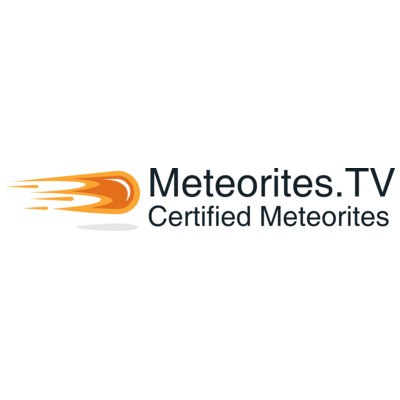The value of a meteorite, commonly known as the price for one gram, depends of many characters of the stone:
- The classification, see the meteorite classification table. This parameter as influence on the price is the more sensible and can quickly change, some vary rare classification very rare ten years ago are now quite common as Howardite and Rumurrutite for example, so the price just move down quickly since few years.
- The total weight known for the classification or a particular meteorite is a very important parameter with sometimes more influence that the classification.
- Quantity available on the private market. On the total weight you have to consider the quantity available for the private market, some meteorites are just locked in Museum and will be never again traded for some high scientific value meteorite.
- Historical value. A well documented and old find mainly preserved in Museum collection
- A meteorite with an old label from well known private collection or Museum give a high value to any meteorite
- A high scientific interest combined with a low total weight known can modify quickly the value of a meteorite
- The shape is very important too, but difficult to appreciate for the beginners. The value of a meteorite is commonly by two or three for a really oriented stone and possibly by ten for a perfectly and well preserved stone. Oriented meteorites were studied by NASA when developing the manned space program to design the re-entry vehicle. Oriented meteorite give the best shape for maximum heat deflection and the way meteorites burned under the stress of entry showed NASA the best way and shape.
- The preparation of a meteorite, included cutting work, polishing and etching is very important for some meteorites as pallasite.
Unless you find an incredibly rare meteorite, its value probably won't make you rich. Do you think you might have found a meteorite? Carefuly look at these two links prepared by Randy Korotev* from the Washington University (One Brookings Drive, St. Louis, MO 63130)
>>How To Recognized a Meteorite (prepared and by courtesy of Randy Kototev)
>>A Photo Gallery Of Meteowrongs (Prepared and by Courtesy of Randy Korotev)
Need to know the current market price for meteorites, see the meteorite price guide
Want to be informed when the meteorite price guide is updated, then suscribe to our newsletter.
*Dr. Randy Korotev is a lunar geochemist. He has studied lunar samples and their chemical compositions since 1969 when the Apollo 11 astronauts collected the first lunar samples on the Moon and brought them to Earth (Haskin et al., 1970)
Here is the classification table with range prices.Unless you find an incredibly rare meteorite, its value probably won't make you rich. Do you think you might have found a meteorite? Carefuly look at these two links prepared by Randy Korotev* from the Washington University (One Brookings Drive, St. Louis, MO 63130)
>>How To Recognized a Meteorite (prepared and by courtesy of Randy Kototev)
>>A Photo Gallery Of Meteowrongs (Prepared and by Courtesy of Randy Korotev)
Need to know the current market price for meteorites, see the meteorite price guide
Want to be informed when the meteorite price guide is updated, then suscribe to our newsletter.
*Dr. Randy Korotev is a lunar geochemist. He has studied lunar samples and their chemical compositions since 1969 when the Apollo 11 astronauts collected the first lunar samples on the Moon and brought them to Earth (Haskin et al., 1970)
